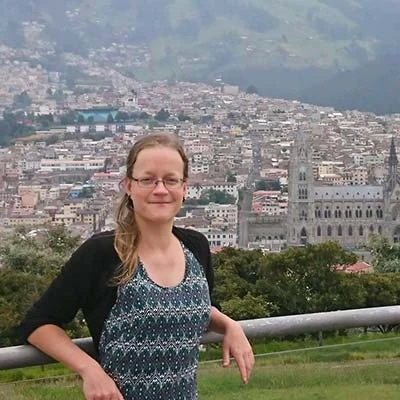
Come with me to A STROLL THROUGH THE MUSEUMS IN DOWNTOWN QUITO.
There is a lot to see and experience in the Ecuadorian capital Quito. In various blog articles we have already presented some sights, especially in the old town. But Quito has not only many beautiful churches and squares, also the museums of the city are interesting and worth a visit. Besides the Museo de Agua, the Mindalae and the Casa Guayasamin, about which we have already written, there are still some to discover, especially in the city center.
Centro Cultural Metropolitano (CCM)
Across a corner from Plaza Grande, just off Garcia Moreno Street, you will find the Centro Cultural Metropolitano. If you need a break from the hustle and bustle of the old town, or want to shelter from the sun or rain, this building is an ideal place. The covered courtyard has a restaurant and from the side corridors of the two-story building, doors lead to different and changing expositions. These are often modern art, social issues, photography or Quito-related exhibitions.
The rooms themselves are also interesting. The building has had a varied history and is one of the oldest in the historic center. It has housed universities, quartels, convents, schools and more. Seminars were held in the rooms, the National Congress gathered here and the Mision Geodesica, which defined the equator line, worked here. To this day, the museum is home to the city’s library.
In a landscaped patio there are also some old handicraft tools on display and there is a closet for book exchange.
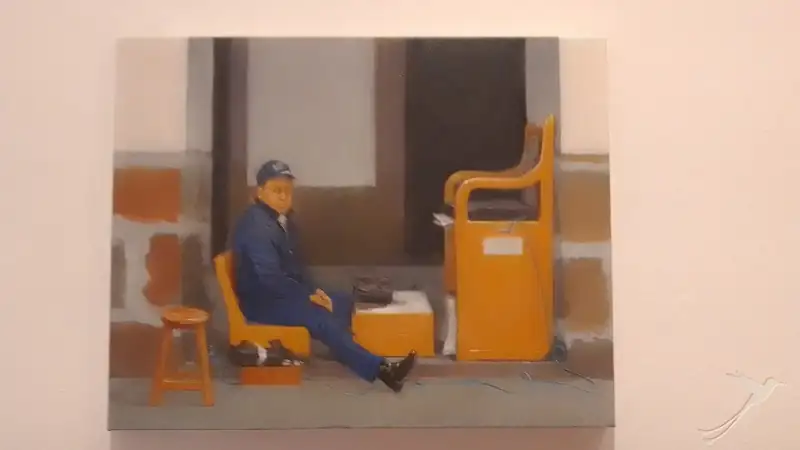
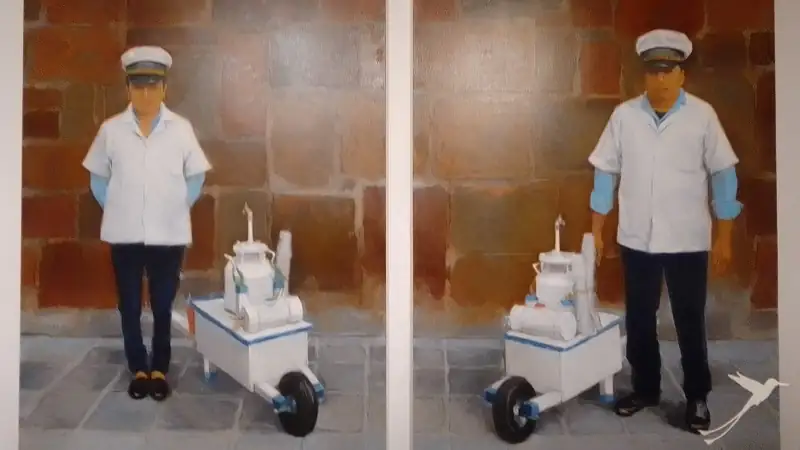

Address: Gabriel García Moreno y Espejo, Quito 170130
Opening Hours: Tuesday – Saturday 9:00 am – 5:30 pm, Sunday 10:00 am – 4:00 pm.
Admission: free
Museo Alberto Mena Caamaño
In the same building as the CCM is the Museo Casa Alberto Mena Caamaño. The entrance is on Espejo Street opposite the wall of the Presidential Palace.
Since I had visited the museum spontaneously, I had not considered beforehand what kind of museum it is. I was then particularly surprised by the life-size wax figures.
The museum consists of the permanent exhibition “de Quito al Ecuador”, four rooms with temporary exhibitions and the Auditorium Hugo Aleman.
An important and well-known part of the permanent exhibition is the massacre of August 2, 1810, which is vividly illustrated with some of the wax figures. The museum’s collection includes 5819 pieces, starting with 600 donated to the city of Quito in 1957 by the aristocrat and philanthropist Alberto Mena Caamaño. Among them were paintings, sculptures, archaeological pieces, weapons and others. Thematically, the museum is dedicated to the history of Ecuador from the time of the Spanish conquest to the proclamation of the Republic of Ecuador. The wax figures depicting various scenes from history make the exhibitions very vivid. I was also impressed by the many thick historical books, some of which lie open under glass.
The explanatory texts are in English and Spanish. Arrows mark the tour through the individual rooms. Photography without flash is allowed.
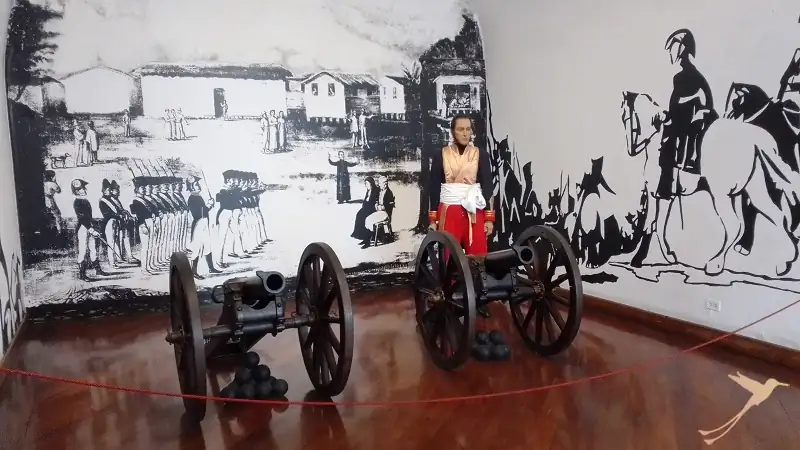
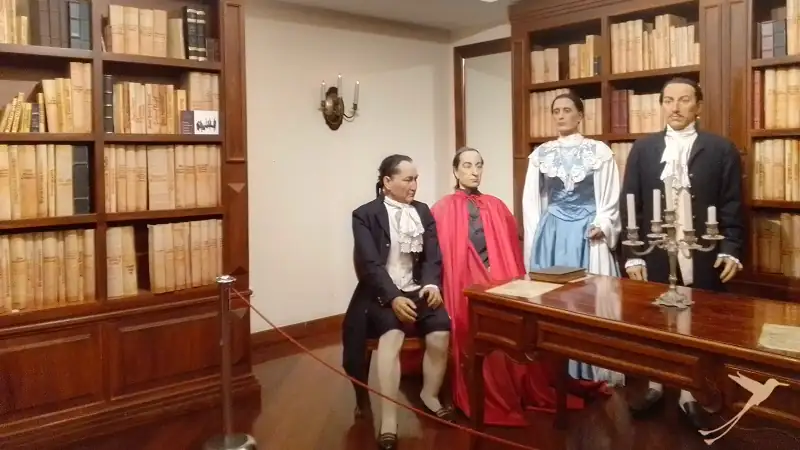
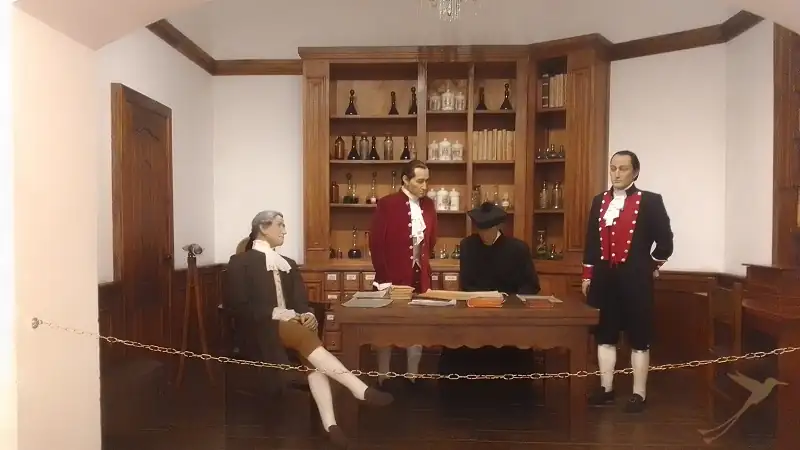
Address: Calle Eugenio Espejo y Garcia Moreno, Quito 170130.
Opening Hours: Tuesday – Saturday 9:00 a.m. – 5:30 p.m., Sunday 10:00 a.m. – 4:00 p.m.
Admission: $1.50
Museo de la Ciudad. City Museum
Walking down Garcia Moreno Street towards Panecillo, passing under the Arco de la Reina, you will come across the entrance to the Museo de la Ciudad (City Museum) on the left. The museum is located in a building that housed the San Juan de Dios Hospital from 1565 to 1974. It is composed of the permanent exhibition on the socio-historical evolution of Quito and its surroundings, a direct connection to the Boulevard 24 de Mayo, two terraces and a viewpoint. In numerous showcases on panels and with many objects and pieces, one part shows the early social organizations until 3500 years ago and another part of the museum shows the socio-cultural changes from 3500 to 500 years ago. Another section is dedicated to colonization and Christianization and the development up to modern times. All the exhibition areas are very vividly designed with a lot of detail, but there is relatively few text.
There is also a historic chapel and other rooms illustrate the era in which the building functioned as a hospital.
In the pretty courtyard with a fountain, you can rest on benches. Another courtyard leads to the basement, where there are temporary exhibitions and a café. From the terrace of this area you have a magnificent view of the Panecillo.
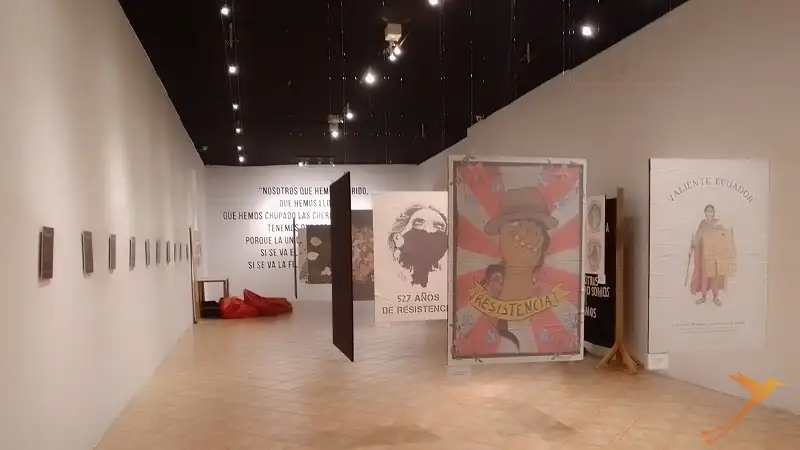

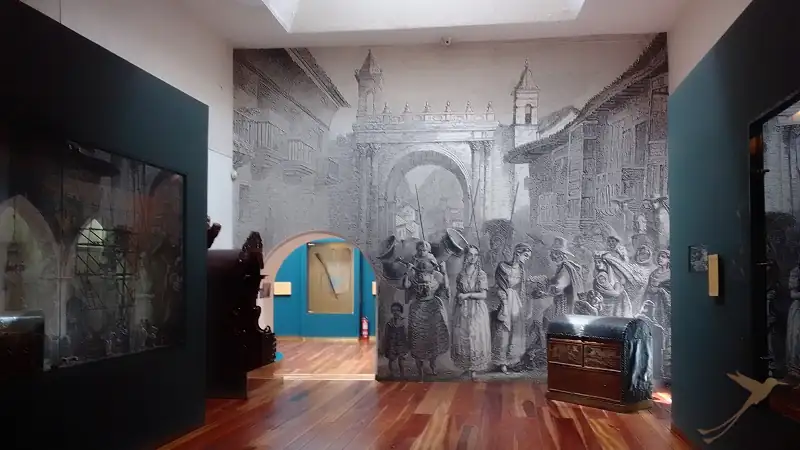
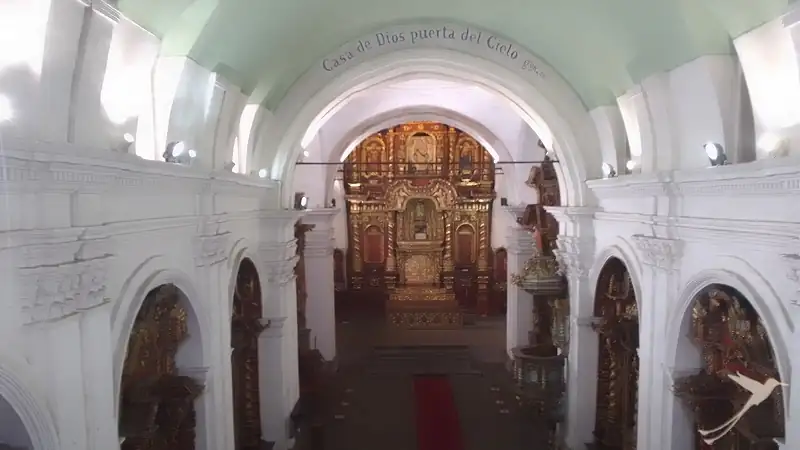
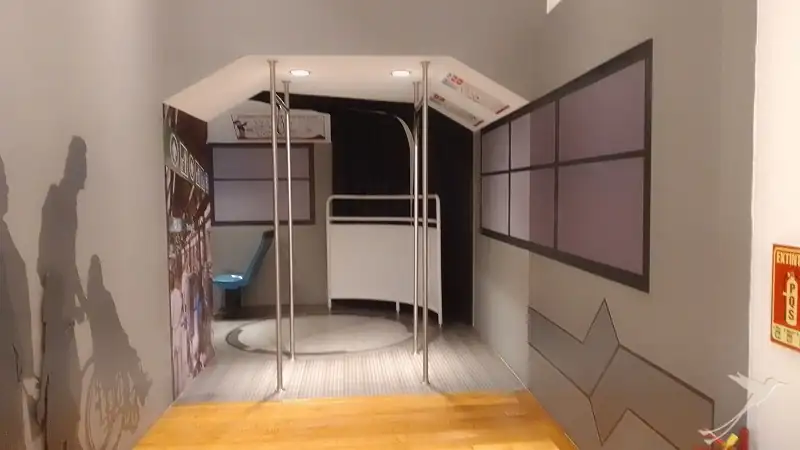
Address: García Moreno S1-47 y Rocafuerte / Bulevar 24 de Mayo y García Moreno,
Opening Hours: Wednesday through Sunday from 9:00 a.m. – 4:00 p.m. (last admission 3:00 p.m.).
Admission: adults $4, children $2
Museo Numismatico. Numismatic Museum
Also on Garcia Moreno Street, at the corner of Sucre Street, is the Numismatic Museum – the Coin Cabinet. It was founded by the Cultural Department of the Ecuadorian Central Bank and has been open to the public since 2001.
It shows the evolution of currency in Ecuador from barter to the current dollar. Various objects of barter, later coins and banknotes are exhibited in chronological order. One can also admire a collection of various commemorative coins and medals.
In total, the collection consists of over 1000 pieces, which are exhibited in the four visitable rooms.
The first room is about barter, the second shows different coins minted in America that were in circulation in the Spanish dominions. The third room exhibits notafil and numismatic objects that accompanied the construction of the nation-state. The fourth room is dedicated to the construction and activity of the Central Bank, founded in 1927. An important collection of stamps completes the exhibition.
Architecturally, the building is interesting both from the outside and the inside. It combines both the baroque and neoclassical styles, and much attention has been paid to geometric detail inside.
From the balcony above the main entrance, there is a good view of the colorful activity on Garcia Moreno Street.
Address: Garcia Moreno y Sucre
Opening Hours: Tuesday through Saturday from 9:00 a.m. – 4:00 p.m.
Admission: free
Museo Nacional del Ecuador. National Museum
Finally, we would like to introduce one of the most important museums in Quito: the National Museum (MUNA-Q) in the Casa de la Cultura. The MUNA-Q is considered the largest museum institution in the country, as it has the largest collection of cultural artifacts, a variety of paintings by different artists and periods, as well as ceramics and ceremonial figures from different periods of Ecuadorian history. The foundation of the collections of the National Museum are the goods acquired in 1960 by the Swiss Max Konanz. Since 1965, work has begun on building up the art collections, which have been gathered by scholars and private collectors. Among them are the most amazing works of colonial and republican art. The collection includes 5,261 sculptures, paintings, engravings, furniture, textiles, gold and silversmith works and jewelry, porcelain, glass and others.
Furthermore, there is a collection of contemporary works by Ecuadorian artists with about 800 works.
The ethnographic collection includes about 300 objects and items of daily use and those for religious purposes.
The museum is roughly divided into four areas: on the one hand, the thematic areas of “Political Power and Social Organization” and “Territory, Economy and Labor”, as well as the Hall of Prehispanic Metallurgy, where, among other things, the characteristic gold sun is exhibited, and the Hall of Colonial Art.
Rooms with temporary exhibitions on a wide variety of topics complement the permanent exhibits.
Address: Av. Patria y Av. Seis de Diciembre, Edificio de la Casa de la Cultura Ecuatoriana.
Opening Hours: Tuesday through Sunday from 9:00 a.m. – 6:00 p.m.
Admission: Free
We hope that this short introduction has inspired you to visit a museum in Quito. Of course, there are many other museums and exhibitions, even smaller ones, that are worth a visit.
Please note that opening hours may vary due to pandemic or other reasons. Please inform yourself in advance about changes or ask your guide or contact us personally.







